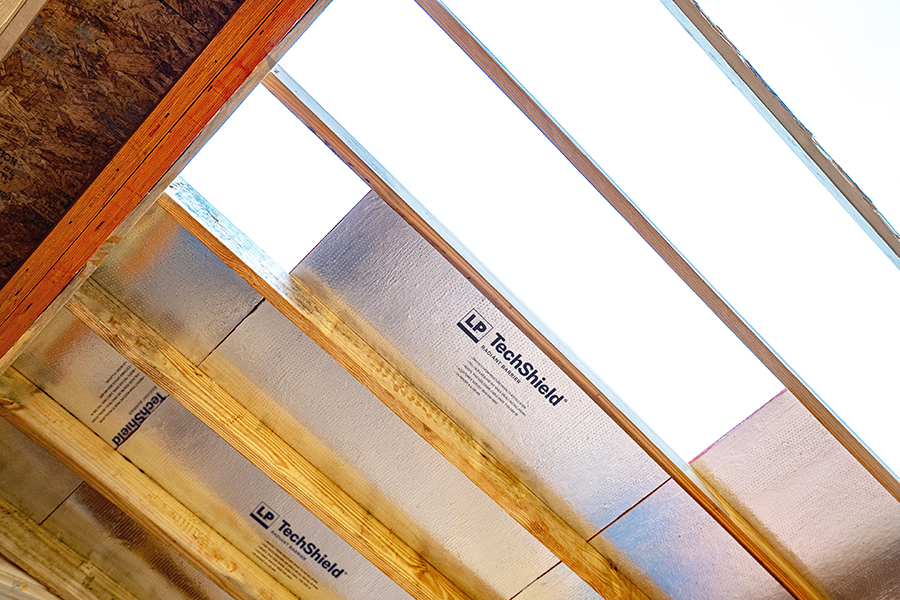Business Advice4 min
What's Behind the Walls: Tips for Selling Long-Term Home Value
The initial conversations with new homebuyers generally focus on architectural style, price per square foot and aesthetic requirements (like the dream kitchen island!). Discussing the structural details that determine the value of your home often happen while poring over blueprints. Here are some tips for having a conversation with your clients to help them understand the importance of investing in the part of their home that's never seen.
Methods for Determining Home Value
Tip #1: Ask, “How long do you plan to live in the home?”
If the answer is decades—or even longer—demonstrate products made for achieving a solid, long-standing structure.
Not all new builds are meant to be a “forever home.” But when Corey Walcott built his vacation home, for example, he envisioned the next two generations making memories in the house. So, his perception of home value was tied to his desire for longevity and permanency.

Tip #2: Ask, “What's important to you? Energy efficiency? Moisture control? Durability?”
The LP Structural Solutions portfolio is engineered for durability and resiliency. “Instead of ‘good' products, LP Structural Solutions products are ‘better and best,' says Jeff Yelle, Director, OSB/EWP Technology, LP Building Solutions. “We take special care in the manufacture of these products, and the portfolio offers the best value for homeowners who can take advantage of the whole system.”
"A well-built home means different things to different people," says Yelle. "There are so many moving parts, including sustainability, stewardship, durability-and much of this is based on where you live. A well-built home in Phoenix may focus on electricity costs while one in Minnesota centers on insulation."
For Walcott, building his lakefront vacation home in North Carolina, long-term value meant combatting the hot and humid summers and rainy winters. His builder, Tom Lawley of Fourtees, Inc., used LP Structural Solutions portfolio products specifically to defend the custom home against moisture while ensuring structural resiliency.
How Structural Resiliency Affects Long-Term Home Values
Long-term home values are sure to suffer if a house is plagued with mold problems, sagging foundations, air quality issues or any inefficiencies that affect overall comfort. Choosing structurally resilient products behind the walls can help your clients achieve their dreams while providing long-term value with better comfort and fewer problems.

Tip #3 – Consider how using sustainable products impact long-term home value.
Yelle anticipates a growing trend in green construction. “Sustainability goes beyond environmental stewardship to encompass long-term value and overall comfort,” says Yelle. “Sometimes we don't think about the true cost every time the home must be rebuilt because the materials don't hold up to environmental conditions.”
Yelle explains that sustainability includes replacement products and materials. Consider the cost of replacing attic contents because of a leaky roof, an overworked air conditioner, or warped and moisture-damaged materials as another way of determining price per square foot in sustainable construction.
That's the very reason why Walcott chose LP WeatherLogic® panels. "We didn't want to worry about high air conditioning costs in the future and appreciate a tight building envelope to ensure the house's longevity," he says.
Homeowners will likely never see the resilient LP Structural Solutions products behind the walls. But they are sure to enjoy the long-term value of a well-built home with better comfort.
Continue Reading
Resiliency Solutions
5 minIntroducing LP® SmartSide® ExpertFinish® Naturals Collection™: Nature-Inspired Beauty Meets Engineered Performance
We're excited to introduce the LP® SmartSide® ExpertFinish® Naturals Collection™, a bold new addition to our trusted line of engineered wood siding and trim that delivers the warmth and beauty of nature with the advanced protection and performance builders and homeowners expect.
Labor Solutions
5 minChoosing the Right LP® Structural Solutions Product for Your Build
When it comes to building strong, reliable, and high-performing structures, the materials you choose matter. At LP Building Solutions, we understand that every project, whether it's a single-family home or a multifamily development, requires structural components that meet your needs for strength, durability, and efficiency.
Sustainability Solutions
5 minBuilding a More Sustainable Future with LP Building Solutions
In today's world, sustainability is no longer just a buzzword, it's a blueprint for responsible living and smarter building. As the construction industry seeks ways to reduce its environmental footprint, LP Building Solutions is focused on providing innovative building materials for eco-conscious builders to help reshape what it means to build sustainably
News & Stories3 min
History of Partnership with Gary Sinise Foundation
The LP Foundation is a proud partner of the Gary Sinise Foundation, which supports wounded veterans in several ways. You can learn more about the LP Foundation here.